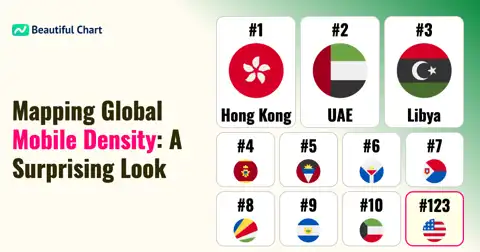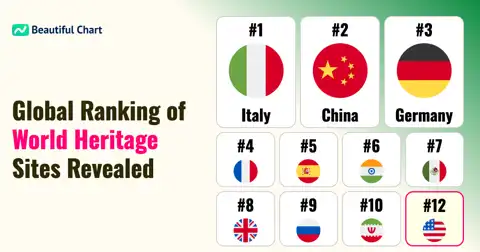The global esports monthly cumulative prize pool data shows the United States leading in 1998, South Korea overtaking in 2005, and the USA regaining the top in 2010. By 2025, China emerged as the leader with $326 million, surpassing both the USA and South Korea. This chart highlights long-term prize growth and shifts among major esports nations.
Cumulative prize pool refers to the total sum of money awarded to players and teams across all esports tournaments, serving as a key indicator of a country's esports industry size and global competitiveness.
The monthly cumulative esports prize pool data from 1998 to July 2025 illustrates the evolving landscape of competitive gaming. In 1998, the United States led the global rankings with just $30,000 in total prizes, reflecting the early days of esports dominated by North American tournaments. By 2005, South Korea had surged ahead with $1.93 million, driven largely by its dominance in StarCraft and other RTS titles, supported by national broadcasting and professional team infrastructure. That year, the USA was second, followed by Sweden, Germany, and Russia, marking the rise of European competitors.
In 2010, the USA reclaimed the top position with $8.66 million, closely followed by South Korea with $7.84 million. The esports scene was expanding rapidly, with titles like League of Legends, Counter-Strike, and Dota 2 boosting prize pools and global participation. European countries such as Sweden, Germany, and Denmark strengthened their positions, reflecting the region's deepening involvement across multiple genres. China, though in fifth place with $1.83 million, was already showing signs of accelerated growth.
By 2015, South Korea regained the top spot with $26.95 million, while the USA and China followed with $22.85 million and $20.52 million respectively. China's surge during this period is notable, fueled by increasing government support, local tournaments, and expansion into MOBA and battle royale games. Meanwhile, traditional esports powerhouses like Sweden, Germany, Russia, and Canada maintained significant shares, though their growth rates were slower compared to the Asian giants.
In 2020, the USA once again led with $143.34 million, China climbed to second with $124.62 million, and South Korea stood at third with $90.95 million. This era saw massive prize inflations due to international events like The International, LoL World Championship, and Fortnite World Cup. New entries such as Brazil, Australia, and Malaysia also moved up, reflecting esports globalization beyond its original hubs.
As of July 2025, China has surged to first place with an unprecedented $326 million, outpacing the USA's $294.51 million and South Korea's $155.11 million. Russia, Brazil, Denmark, France, Sweden, Germany, and Canada round out the top 10. Asian nations such as Japan, Taiwan, Malaysia, Indonesia, and Vietnam are now firmly positioned in the mid-tier, reflecting the broad regional development of esports ecosystems.
The steady growth in cumulative prize pools highlights the industry's maturation, with increasing commercial investments, media rights deals, and audience expansion driving up tournament stakes. China's rise is closely tied to structural factors, including a vast player base, state-supported leagues, and corporate sponsorships. The USA's strength is buoyed by strong FPS, MOBA, and battle royale communities alongside its influencer-driven streaming culture. South Korea, once the unrivaled esports leader, maintains its relevance but faces intensified competition from China and the USA in prize money rankings.
Looking forward, the esports landscape is expected to see further diversification, with emerging nations aiming to break into higher tiers through talent development, international exposure, and infrastructure investments. Monitoring these prize trends offers a valuable lens into the global dynamics of the esports industry, informing stakeholders about competitive balance, market shifts, and investment opportunities.
| Rank | Name | Indicator |
|---|---|---|
1 | $ 326M 16K | |
2 | $ 294M 513K | |
3 | $ 155M 111K | |
4 | $ 94M 631K | |
5 | $ 70M 879K | |
6 | $ 63M 155K | |
7 | $ 60M 588K | |
8 | $ 58M 133K | |
9 | $ 52M 307K | |
10 | $ 49M 894K | |
11 | $ 48M 703K | |
12 | $ 41M 23K | |
13 | $ 39M 778K | |
14 | $ 34M 9K | |
15 | $ 33M 678K | |
16 | $ 31M 433K | |
17 | $ 30M 874K | |
18 | $ 24M 926K | |
19 | $ 22M 888K | |
20 | $ 22M 798K |





